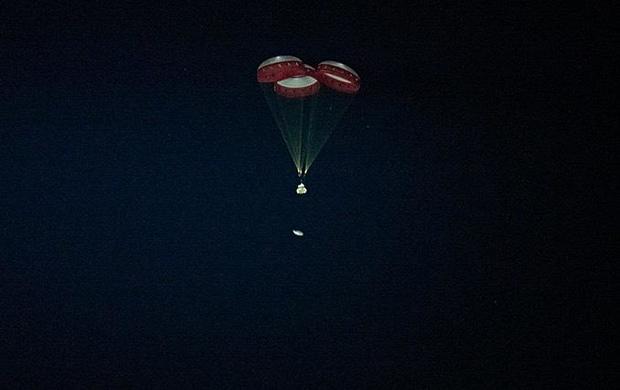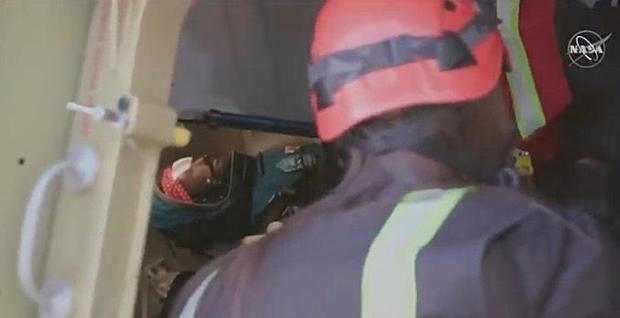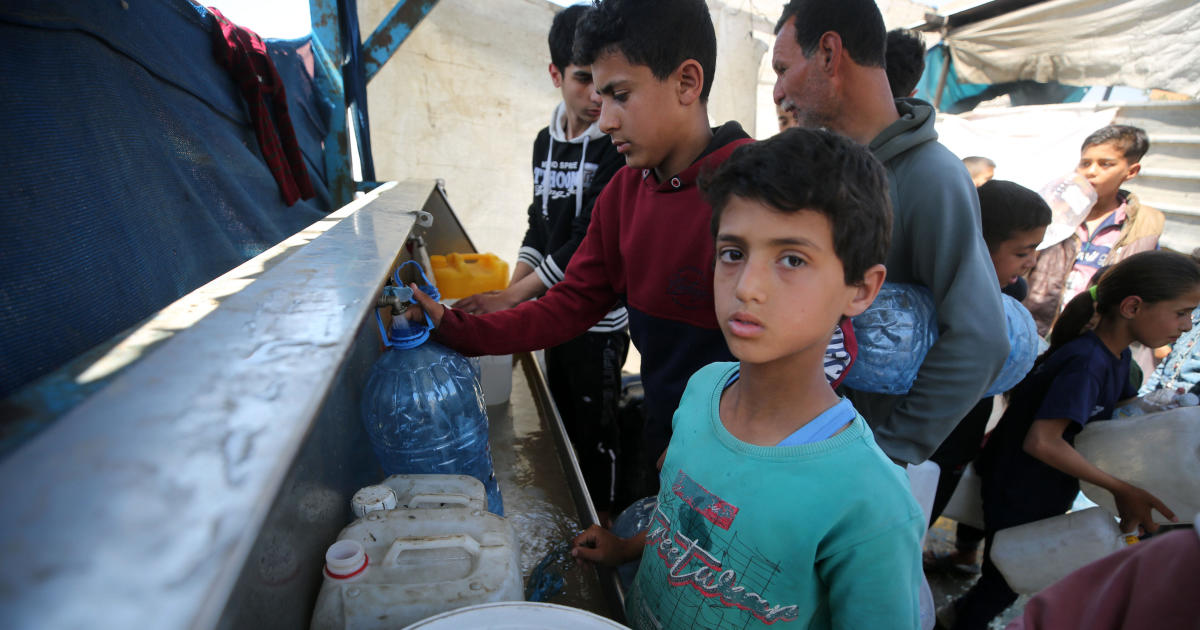Boeing Starliner descends to picture-perfect New Mexico landing after shortened mission
Boeing's unpiloted Starliner crew transport capsule plunged to a "picture-perfect" touchdown in New Mexico on Sunday, bringing an early end to an only partially successful maiden flight marred by a timing glitch that derailed a planned rendezvous and docking with the International Space Station.
But the capsule's flawless launch atop a United Launch Alliance Atlas 5 rocket Friday, the successful completion of many of the flight's original test objectives and the pinpoint landing Sunday raised the prospect of a piloted test flight next year as originally planned, assuming a review of telemetry and stored data confirms good performance.
"If you went straight down the (mission objectives) checklist, I think we'd be in the low 60 percent (range) right now," said Jim Chilton, a veteran Boeing engineer managing the company's Starliner project. "If I was going to infer how that data (review) is going to come out, I'd say we're probably in the 85, 90% range of our test objectives."
But given the Starliner was unable to rendezvous and dock with the space station — a NASA commercial crew contract requirement — and given the results of the data review are not yet known, Boeing "is not a position to propose going to do a crewed flight test," Chilton said.
"If everything had gone swimmingly, I don't think I'd be here proposing it until I saw the data. Now that we know we've had challenges, then maybe data review (will take) a little longer."
He said it likely will take engineers well into January "before everybody has a thorough understanding" of how the Starliner performed during its maiden test flight. But, he added, "everything we're looking at today looks like this design works great."
Flying 155 miles above the southern Indian Ocean, four engines in the Starliner's aft service module ignited and fired for 55 seconds starting at 7:23 a.m. EST, generating 6,000 pounds of thrust and changing the craft's velocity by about 335 mph. That was enough to drop the far side of the orbit deep into the atmosphere over North America
After discarding the no-longer-needed service module, the capsule, traveling at nearly five miles per second, slammed back into the discernible atmosphere at an altitude of about 400,000 feet above the Pacific Ocean, enduring temperatures of some 3,000 degrees as atmospheric friction acted to rapidly slow the spacecraft to sub-sonic velocities.
Approaching the White Sands Missile Range landing site from the southwest, small drogue chutes deployed four-and-a-half minutes before touchdown, pulling out three large main parachutes at an altitude of about 8,000 feet that slowed the capsule to a much more sedate 19 mph or so.
The Starliner then jettisoned its heat shield, six large air bags inflated and the capsule touched down in pre-dawn darkness at 7:57 a.m., closing out a mission lasting two days one hour and 21 minutes since launch Friday from the Cape Canaveral Air Force Station.
Boeing recovery crews stationed near the landing site opened the capsule's hatch about an hour after touchdown and reported that "Rosie the Rocketeer" — an instrumented astronaut test dummy strapped into the commander's seat — came through her two-day space flight in excellent condition.
"Rosie the Rocketeer, she lived in air conditioned splendor for the last couple days," Chilton said. "Overall, the design just held up really well." He apologized to the space station's six-member crew for not delivering on-board Christmas presents as planned.
The unpiloted Starliner test flight was intended to clear the way for flights carrying astronauts to and from the space station staring in 2020. SpaceX also is building a commercial astronaut ferry ship for NASA and has already conducted a successful unpiloted flight to the space station.
The Starliner's flight got off to a flawless start Friday. About 15 minutes after release from the Atlas 5's Centaur second stage, the capsule was expected to carry out an orbit insertion rocket firing to raise the low point of its orbit and set up the planned rendezvous with the space station.
But the OI burn never happened because of a still-unexplained glitch that resulted in an 11-hour discrepancy between the spacecraft's internal clock and the actual time since launch. The timing problem was quickly corrected by flight controllers, but not before the spacecraft had wasted propellant with a series of unnecessary maneuvers.
Mission managers then called off the space station rendezvous, opting instead to shorten the mission and bring the spacecraft back to Earth Sunday.
Despite the early end to the flight, engineers carried out as many of the original test objectives as possible, giving them confidence Starliner capsules will work as advertised when they begin carrying astronauts to and from the space station.
"We tested all the thrusters, we tested the orbital maneuvering system engines, we tested the docking system, we tested the (radio) link to station," said Steve Stich, deputy manager of NASA's commercial crew program. "We tested the environmental control system, the flight computers, the thermal systems. ... If you look at the core systems on the vehicle, we tested a majority of those systems."
Said NASA Administrator Jim Bridenstine: "We have a solid understanding of the challenge that we had, and why it occurred. And it's not something that is going to prevent us from moving forward quickly."
Another Starliner is being readied for the program's first piloted test flight and all three crew members — Chris Ferguson, a Boeing vice president and former shuttle commander, space station veteran Mike Fincke and rookie astronaut Nicole Mann — were on hand for landing Sunday.
So was Sunita Williams, one of NASA's most experienced astronauts. She and astronaut Josh Cassada plan to launch aboard the same Starliner that landed Sunday when it is eventually takes off on Boeing's first operational space station crew rotation flight.
In an unexpected announcement, she said the spacecraft will be named "Calypso" after famed undersea explorer Jacques Cousteau's research ship.
"You know, in a little homage to other explorers and the ships that they rode on, I think we're going to call her 'Calypso,'" she said. "I love the ocean, I love what the ocean means to this planet. There's so much to discover in the ocean, and there's so much to discover in space, it just seemed like a natural marriage."







